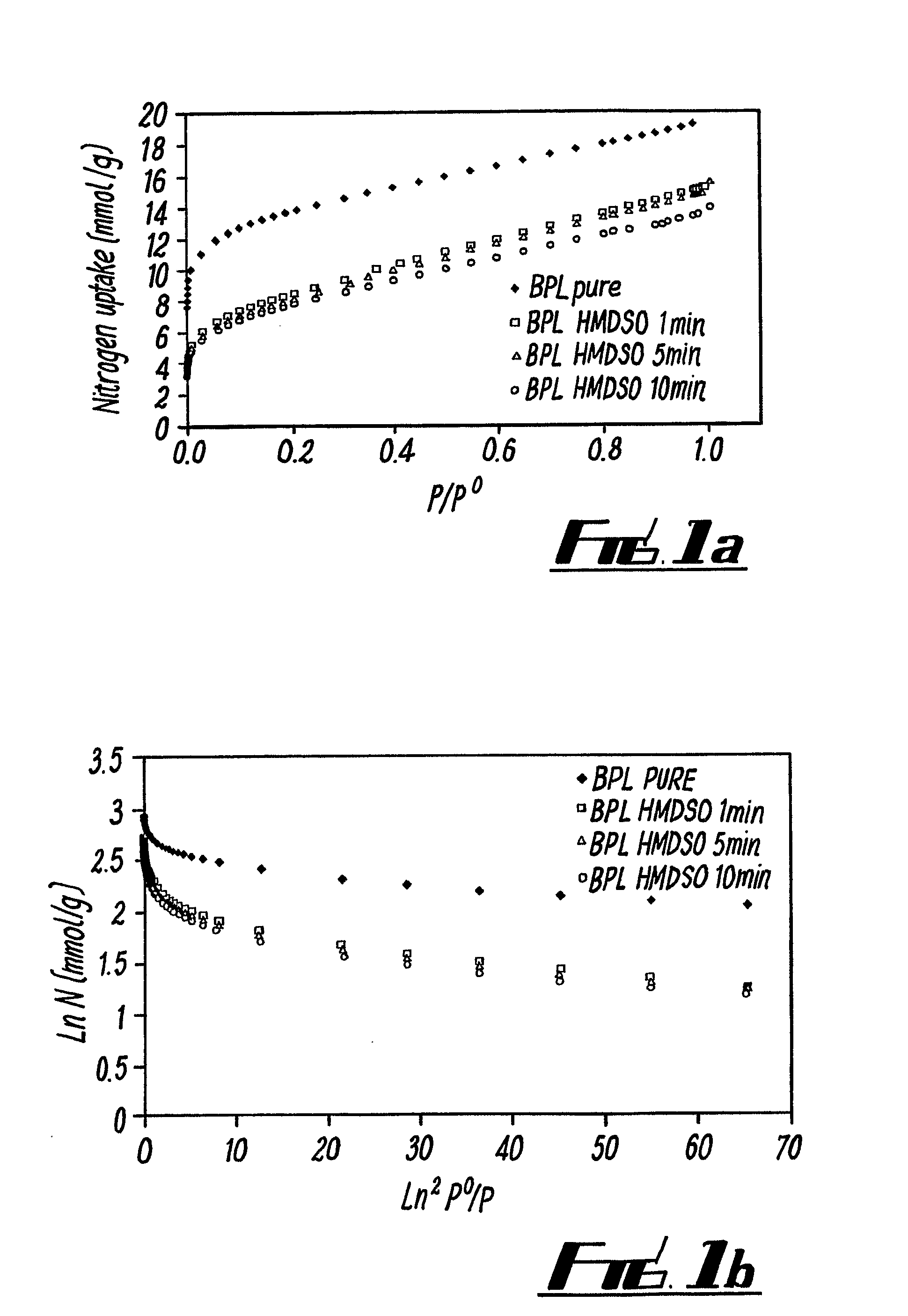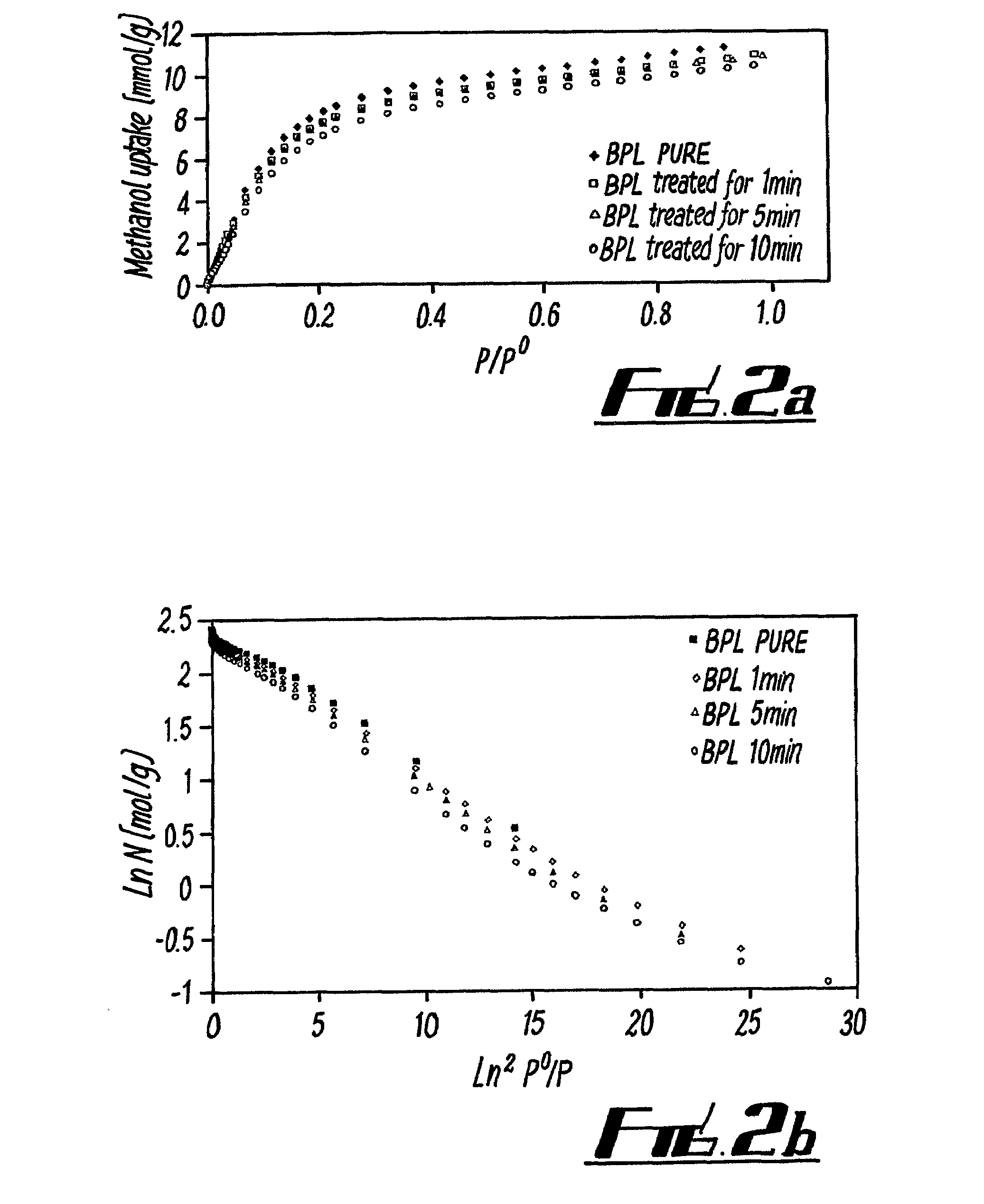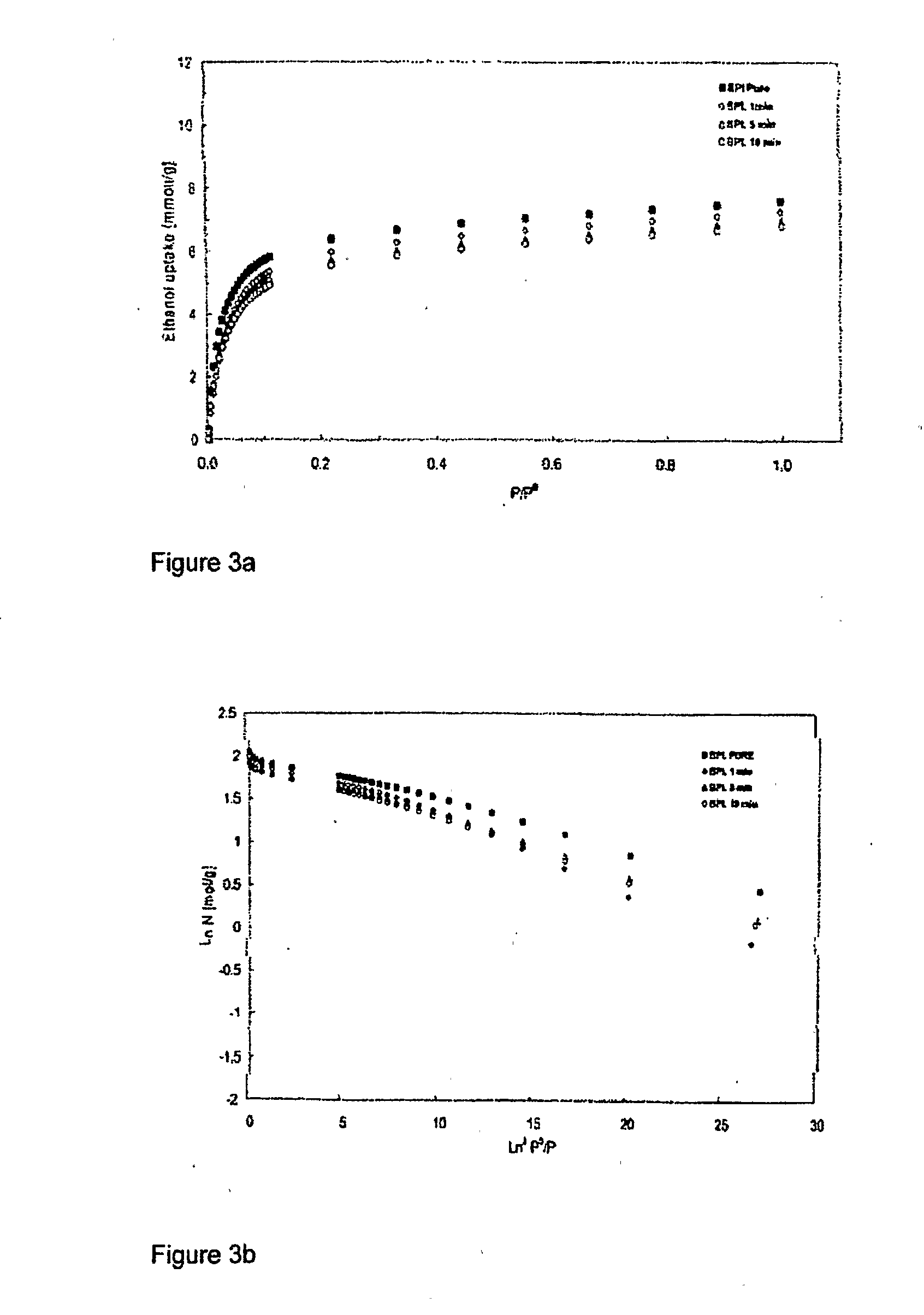Coating process and coated product
a coating process and coating technology, applied in the field of fluid adsorption and separation, can solve the problems of increasing the hydrophilicity of the surface, affecting the adsorption of organic compounds such as organic compounds by microporous materials, and affecting the adsorption efficiency of organic compounds, so as to increase the amount of adsorbate adsorption, increase the molecular size of adsorbate, and reduce the amount of adsorba
- Summary
- Abstract
- Description
- Claims
- Application Information
AI Technical Summary
Benefits of technology
Problems solved by technology
Method used
Image
Examples
example 1
[0120]1 g of microporous activated carbon, BL a bituminous Pittsburgh ligite based material was exposed to HMDSO (Sigma, Aldrich) Plasma and PFH plasma in a plasma chamber. An RF power of 40 W and a constant flow rate of circa 60 Sccm for HMDSO was used in all experiments for deposition times of 1, 5 and 10 minutes respectively.
[0121]The surface chemical composition of HMDSO plasma treated BPL was studied using a Kratos Axix His 5 channel imaging X-ray photoelectron spectrometer using monochromated Alkα radiation (1486.6.ev). A Calorimeter calvet 80 C was used to measure the heat of immersion. Measurements were performed at room temperature (25+2° C.) using three test liquids, distilled water (laboratory prepared), methanol and isopropanol. The parameter characteristics of unmodified BPL (BPL-0) and BPL plasma treated as described above at deposition times of 1, 5 and 10 minutes respectively (BPL-1, BPL-2 and BPL-3) were determined in an automated volumetric gas adsorption apparatus...
PUM
| Property | Measurement | Unit |
|---|---|---|
| thickness | aaaaa | aaaaa |
| diameter | aaaaa | aaaaa |
| pore diameter | aaaaa | aaaaa |
Abstract
Description
Claims
Application Information
 Login to View More
Login to View More - R&D
- Intellectual Property
- Life Sciences
- Materials
- Tech Scout
- Unparalleled Data Quality
- Higher Quality Content
- 60% Fewer Hallucinations
Browse by: Latest US Patents, China's latest patents, Technical Efficacy Thesaurus, Application Domain, Technology Topic, Popular Technical Reports.
© 2025 PatSnap. All rights reserved.Legal|Privacy policy|Modern Slavery Act Transparency Statement|Sitemap|About US| Contact US: help@patsnap.com



